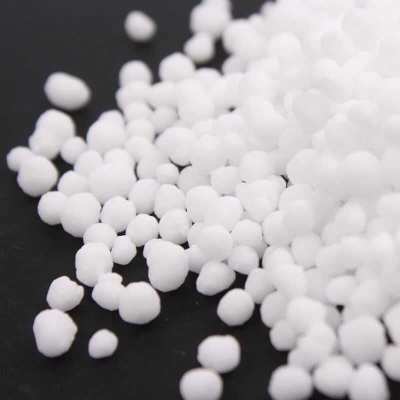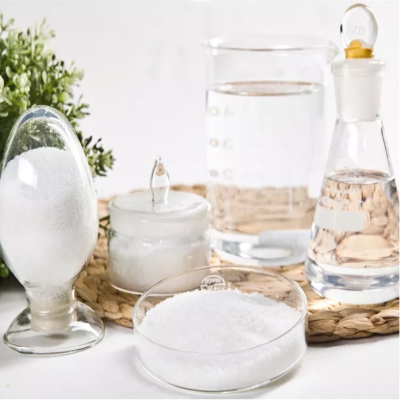-
Categories
-
Pharmaceutical Intermediates
-
Active Pharmaceutical Ingredients
-
Food Additives
- Industrial Coatings
- Agrochemicals
- Dyes and Pigments
- Surfactant
- Flavors and Fragrances
- Chemical Reagents
- Catalyst and Auxiliary
- Natural Products
- Inorganic Chemistry
-
Organic Chemistry
-
Biochemical Engineering
- Analytical Chemistry
- Cosmetic Ingredient
-
Pharmaceutical Intermediates
Promotion
ECHEMI Mall
Wholesale
Weekly Price
Exhibition
News
-
Trade Service
The heat dissipation of electronic devices is a big problem.
With the increasing integration of integrated circuits and electronic devices, smaller and smaller sizes, and continuous improvement of performance, heat dissipation has gradually become a limiting factor
.
For thermal management materials used in this field, high thermal conductivity is not the only requirement.
Good electrical insulation, mechanical strength, and chemical stability are also essential
.
? Polymer materials meet other conditions except for low thermal conductivity (0.
1~0.
5 W·m-1·K-1)
.
In order to improve its thermal conductivity and maintain insulation, researchers often add oxides or nitrides as fillers, such as Al2O3, AlN and boron nitride (h-BN)
.
? Ultra-high thermal conductivity of "white graphene" Among many fillers, hexagonal boron nitride nanosheets (BNNS) have extremely high thermal conductivity and electrical insulation and have attracted widespread attention.
The theoretical in-plane thermal conductivity is as high as 1700 ~2000 W·m-1·K-1, with a dielectric breakdown strength of 35 kV·mm-1, which is called "white graphene"
.
BNNS is generally obtained by peeling off bulk h-BN.
When used to improve the thermal conductivity of polymers, the higher the aspect ratio, the better
.
Compared with the peeling of graphene, BNNS requires 33% more energy during peeling, which is more difficult
.
The yield of molten potassium hydroxide-sodium hydroxide chemical stripping method is only 0.
2%, and the aspect ratio of stripped BNNS is only 130.
30
.
Although the yield of physical technologies such as ultrasound and ball milling can be increased to 20% or even 95%, the aspect ratio is even more horrible, sometimes as low as 67.
21
.
How to spin off BNNS with high yield and quality is still a huge challenge
.
? Results Introduction Chen Ding of Hunan University, Jibao Lu of Shenzhen Institute of Advanced Technology of Chinese Academy of Sciences, and Lin Zhengde of Ningbo Institute of Materials Technology and Engineering of Chinese Academy of Sciences proposed a microfluidic physics method based on high-pressure jet to prepare BNNS
.
They injected a high-pressure fluid of 75 MPa into the microchannel, and used the formed high shear rate of 8.
77×107s-1 to strip the BNNS.
It only took 30 minutes to prepare the yield rate as high as 70%-76%, and the aspect ratio reached wounds.
The BNNS with a record of 1500 perfectly solves the problem of preparing high aspect ratio BNNS
.
The BNNS/polyvinyl alcohol composite film synthesized by the vacuum filtration method, when the BNNS content is 83%, the in-plane thermal conductivity of the material can reach 67.
6 W·m-1·K-1, and the thermal conductivity enhancement coefficient (TCE) reaches a new high , Reaching 35500
.
They made this film into a flexible electrical insulation heat sink for cooling high-power LED lights, and it only takes 50 seconds to reduce the temperature of the LED to 74.
2°C, which is far more efficient than a copper plate heat sink
.
??? Ultra-high shear force "cut out" BNNS Figure 1.
Preparation process and structure characterization of BNNS
.
The researcher used a 1:1 ethanol/water mixture as the solvent with a surface tension of 28 mJ·m-2, close to the surface tension of BNNS (about 35 mJ·m-2), and then added 0.
5 g of boron nitride powder, After stirring for 15 minutes, it was pressurized to 75 MPa, and then passed into a microfluidic microchannel to circulate 60 times.
After standing for 7 days, 0.
35-0.
38 g of BNNS was collected from the supernatant, and the yield reached 70- 76%
.
Through characterization, the researchers found that each piece of BNNS has a smooth surface, no impurities, and no defects.
The lateral size is ≈4.
86 μm, the thickness is ≈3.
0 nm, and the aspect ratio reaches 1500±91.
Each BNNS is composed of 7 layers with a layer spacing of 0.
33 nm.
, Achieved the perfect stripping of BNNS
.
? Ultra-high thermal conductivity Figure 2.
Research on thermal conductivity of BNNS composite film
.
? Researchers prepared a composite film of BNNS with 83% polyvinyl alcohol by vacuum filtration, and found that under different BNNS content, the film with an aspect ratio of 1500 has an in-plane thermal conductivity greater than 1000.
.
When the filler content is 83%, the in-plane thermal conductivity of the BNNS-1500 composite film reaches 67.
6 W·m-1·K-1, which is higher than the thermal conductivity of the BNNS-1000 film (50.
9 W·m-1·K-1 ) Increased by 33%, indicating that the aspect ratio plays a key role in improving the thermal conductivity of BNNS composites
.
The research also found that this composite film has good thermal stability.
In the thermal shock test, the deviation of the in-plane thermal conductivity of the composite film is 1.
6% at 25℃ and 4.
0% at 105℃, which is much smaller than that of polyvinyl alcohol film.
The results (9.
7% at 25°C and 14.
9% at 105°C)
.
The researchers defined the ratio of the thermal conductivity of the composite film to the polyvinyl alcohol film (0.
19 W·m-1·K-1) as the thermal conductivity enhancement coefficient TCE, and found that the TCE of the composite film reached a record 35,500, which is higher than the TCE.
427.
This is due to the long phonon transmission path formed by the high aspect ratio BNNS
.
Through calculation, the researchers also found that the contact resistance between BNNS-1500 is 1.
1×105 K·W-1, which is only half of BNNS-1000 (2.
2×105 K·W-1)
.
? A perfect film with good strength, folding resistance, high thermal conductivity and insulation.
Figure 3.
Analysis of the mechanical properties of the composite film
.
In addition to excellent thermal conductivity, the composite film needs to have good mechanical properties and electrical insulation when used in device heat dissipation applications
.
The tensile strength of the film with a BNNS content of 83% is 13±1.
7 MPa, which can withstand 100 grams of stretching.
It will not break even if it is folded into a paper crane and bends for 2000 times.
It can also be cut into any shape.
Later, the in-plane thermal conductivity of the film only dropped by 4%
.
In addition, the volume resistivity of the film is as high as 2.
1×1014Ω·cm, which is 20 times higher than that of the polyvinyl alcohol film and far exceeds the electrical insulation standard of 109Ω·cm
.
? Efficient LED heat dissipation performance Figure 4.
Composite film is used for heat dissipation of high-power LED lights
.
Due to the excellent performance of BNNS composite film, the researchers used it as a flexible heat sink for high-power LED lights (10 W) and compared it with polyvinyl alcohol film and commercial copper plate heat sinks
.
It is found that when the composite film is used as the heat sink, the temperature of the LED reaches a stable state within 50 seconds.
The other two materials require 180 seconds.
The temperature of the LED is only 74.
2°C, which is much lower than the 136.
7°C of the copper plate and polyvinyl alcohol.
149.
6°C of the film
.
Because the life of the LED is closely related to the operating temperature, and every 10°C reduction can extend the life of 50%, the electrically insulating heat sink prepared in this article has broad prospects in the field of electronic packaging and printed circuit board thermal management
.
? Summary Stripping the high aspect ratio BNNS is the key to the preparation of electrical insulation and high thermal conductivity composite materials.
The researchers used high-pressure jet microfluidic technology to perfectly strip the BNNS with an aspect ratio of up to 1500, and the BNNS content was prepared by the vacuum filtration method.
83% polyvinyl alcohol composite film
.
It was found that the in-plane thermal conductivity of the film was as high as 67.
6 W·m-1·K-1, and the TCE reached 35,500
.
The film not only has good thermal conductivity, but also excellent mechanical properties: the tensile strength is 13±1.
7 MPa, it will not break even if it is bent 2000 times, and the volume resistivity is as high as 2.
1×1014Ω·cm, which is better than that of polyvinyl alcohol film.
It is 20 times higher
.
After the researchers made this perfect film into a flexible heat sink, the temperature of the LED can be reduced to 74.
2°C within 50 seconds, while the copper plate heat sink needs 180 seconds to reduce the temperature to 136.
7°C
.
With the increasing integration of integrated circuits and electronic devices, smaller and smaller sizes, and continuous improvement of performance, heat dissipation has gradually become a limiting factor
.
For thermal management materials used in this field, high thermal conductivity is not the only requirement.
Good electrical insulation, mechanical strength, and chemical stability are also essential
.
? Polymer materials meet other conditions except for low thermal conductivity (0.
1~0.
5 W·m-1·K-1)
.
In order to improve its thermal conductivity and maintain insulation, researchers often add oxides or nitrides as fillers, such as Al2O3, AlN and boron nitride (h-BN)
.
? Ultra-high thermal conductivity of "white graphene" Among many fillers, hexagonal boron nitride nanosheets (BNNS) have extremely high thermal conductivity and electrical insulation and have attracted widespread attention.
The theoretical in-plane thermal conductivity is as high as 1700 ~2000 W·m-1·K-1, with a dielectric breakdown strength of 35 kV·mm-1, which is called "white graphene"
.
BNNS is generally obtained by peeling off bulk h-BN.
When used to improve the thermal conductivity of polymers, the higher the aspect ratio, the better
.
Compared with the peeling of graphene, BNNS requires 33% more energy during peeling, which is more difficult
.
The yield of molten potassium hydroxide-sodium hydroxide chemical stripping method is only 0.
2%, and the aspect ratio of stripped BNNS is only 130.
30
.
Although the yield of physical technologies such as ultrasound and ball milling can be increased to 20% or even 95%, the aspect ratio is even more horrible, sometimes as low as 67.
21
.
How to spin off BNNS with high yield and quality is still a huge challenge
.
? Results Introduction Chen Ding of Hunan University, Jibao Lu of Shenzhen Institute of Advanced Technology of Chinese Academy of Sciences, and Lin Zhengde of Ningbo Institute of Materials Technology and Engineering of Chinese Academy of Sciences proposed a microfluidic physics method based on high-pressure jet to prepare BNNS
.
They injected a high-pressure fluid of 75 MPa into the microchannel, and used the formed high shear rate of 8.
77×107s-1 to strip the BNNS.
It only took 30 minutes to prepare the yield rate as high as 70%-76%, and the aspect ratio reached wounds.
The BNNS with a record of 1500 perfectly solves the problem of preparing high aspect ratio BNNS
.
The BNNS/polyvinyl alcohol composite film synthesized by the vacuum filtration method, when the BNNS content is 83%, the in-plane thermal conductivity of the material can reach 67.
6 W·m-1·K-1, and the thermal conductivity enhancement coefficient (TCE) reaches a new high , Reaching 35500
.
They made this film into a flexible electrical insulation heat sink for cooling high-power LED lights, and it only takes 50 seconds to reduce the temperature of the LED to 74.
2°C, which is far more efficient than a copper plate heat sink
.
??? Ultra-high shear force "cut out" BNNS Figure 1.
Preparation process and structure characterization of BNNS
.
The researcher used a 1:1 ethanol/water mixture as the solvent with a surface tension of 28 mJ·m-2, close to the surface tension of BNNS (about 35 mJ·m-2), and then added 0.
5 g of boron nitride powder, After stirring for 15 minutes, it was pressurized to 75 MPa, and then passed into a microfluidic microchannel to circulate 60 times.
After standing for 7 days, 0.
35-0.
38 g of BNNS was collected from the supernatant, and the yield reached 70- 76%
.
Through characterization, the researchers found that each piece of BNNS has a smooth surface, no impurities, and no defects.
The lateral size is ≈4.
86 μm, the thickness is ≈3.
0 nm, and the aspect ratio reaches 1500±91.
Each BNNS is composed of 7 layers with a layer spacing of 0.
33 nm.
, Achieved the perfect stripping of BNNS
.
? Ultra-high thermal conductivity Figure 2.
Research on thermal conductivity of BNNS composite film
.
? Researchers prepared a composite film of BNNS with 83% polyvinyl alcohol by vacuum filtration, and found that under different BNNS content, the film with an aspect ratio of 1500 has an in-plane thermal conductivity greater than 1000.
.
When the filler content is 83%, the in-plane thermal conductivity of the BNNS-1500 composite film reaches 67.
6 W·m-1·K-1, which is higher than the thermal conductivity of the BNNS-1000 film (50.
9 W·m-1·K-1 ) Increased by 33%, indicating that the aspect ratio plays a key role in improving the thermal conductivity of BNNS composites
.
The research also found that this composite film has good thermal stability.
In the thermal shock test, the deviation of the in-plane thermal conductivity of the composite film is 1.
6% at 25℃ and 4.
0% at 105℃, which is much smaller than that of polyvinyl alcohol film.
The results (9.
7% at 25°C and 14.
9% at 105°C)
.
The researchers defined the ratio of the thermal conductivity of the composite film to the polyvinyl alcohol film (0.
19 W·m-1·K-1) as the thermal conductivity enhancement coefficient TCE, and found that the TCE of the composite film reached a record 35,500, which is higher than the TCE.
427.
This is due to the long phonon transmission path formed by the high aspect ratio BNNS
.
Through calculation, the researchers also found that the contact resistance between BNNS-1500 is 1.
1×105 K·W-1, which is only half of BNNS-1000 (2.
2×105 K·W-1)
.
? A perfect film with good strength, folding resistance, high thermal conductivity and insulation.
Figure 3.
Analysis of the mechanical properties of the composite film
.
In addition to excellent thermal conductivity, the composite film needs to have good mechanical properties and electrical insulation when used in device heat dissipation applications
.
The tensile strength of the film with a BNNS content of 83% is 13±1.
7 MPa, which can withstand 100 grams of stretching.
It will not break even if it is folded into a paper crane and bends for 2000 times.
It can also be cut into any shape.
Later, the in-plane thermal conductivity of the film only dropped by 4%
.
In addition, the volume resistivity of the film is as high as 2.
1×1014Ω·cm, which is 20 times higher than that of the polyvinyl alcohol film and far exceeds the electrical insulation standard of 109Ω·cm
.
? Efficient LED heat dissipation performance Figure 4.
Composite film is used for heat dissipation of high-power LED lights
.
Due to the excellent performance of BNNS composite film, the researchers used it as a flexible heat sink for high-power LED lights (10 W) and compared it with polyvinyl alcohol film and commercial copper plate heat sinks
.
It is found that when the composite film is used as the heat sink, the temperature of the LED reaches a stable state within 50 seconds.
The other two materials require 180 seconds.
The temperature of the LED is only 74.
2°C, which is much lower than the 136.
7°C of the copper plate and polyvinyl alcohol.
149.
6°C of the film
.
Because the life of the LED is closely related to the operating temperature, and every 10°C reduction can extend the life of 50%, the electrically insulating heat sink prepared in this article has broad prospects in the field of electronic packaging and printed circuit board thermal management
.
? Summary Stripping the high aspect ratio BNNS is the key to the preparation of electrical insulation and high thermal conductivity composite materials.
The researchers used high-pressure jet microfluidic technology to perfectly strip the BNNS with an aspect ratio of up to 1500, and the BNNS content was prepared by the vacuum filtration method.
83% polyvinyl alcohol composite film
.
It was found that the in-plane thermal conductivity of the film was as high as 67.
6 W·m-1·K-1, and the TCE reached 35,500
.
The film not only has good thermal conductivity, but also excellent mechanical properties: the tensile strength is 13±1.
7 MPa, it will not break even if it is bent 2000 times, and the volume resistivity is as high as 2.
1×1014Ω·cm, which is better than that of polyvinyl alcohol film.
It is 20 times higher
.
After the researchers made this perfect film into a flexible heat sink, the temperature of the LED can be reduced to 74.
2°C within 50 seconds, while the copper plate heat sink needs 180 seconds to reduce the temperature to 136.
7°C
.







